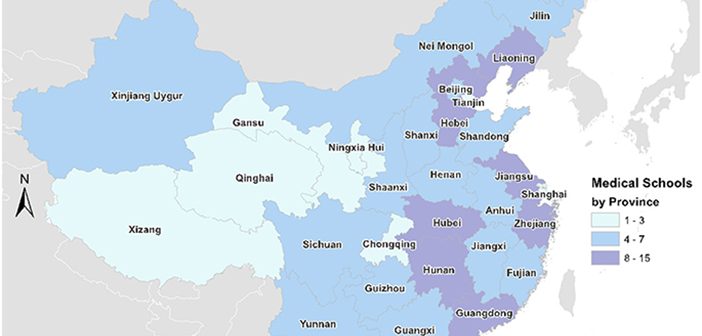Chinese medical education is rising, rapidly but unevenly, from Cultural Revolution rubble.
For scores of years after the first medical school opened in China in 1886, the country progressed in building a medical education system for its fast-growing population. Then 50 years ago, it not only came to a screeching halt, but to a full reversal with the Cultural Revolution.
“Indeed, throughout the decade in question (1966 to 1976), all extant medical schools were effectively shuttered and their faculty disbanded,” write the authors of a new paper describing the history and current status of China’s medical education system. “It was only in the aftermath of the Cultural Revolution and the passing of Chairman Mao Zedong in 1976 that the medical education enterprise embarked on a slow recovery process during which some of the schools affected were allowed to reopen.”
Since then, the pace has quickened considerably to the point where the country has more than 2.1 million practicing physicians and more than 167 civilian medical schools enrolling about 64,000 students. The restoration of a large national system for undergraduate medical education in just 40 years is remarkable, says study corresponding author Eli Adashi, MD, professor of medical science.
“They had to go from 0 to 60 in three seconds,” says Adashi, who has visited China many times since 2008, often to study and to advise colleagues within the system. “They had to cover a lot of ground, and since they are trying to catch up to the rest of the world, they had to go about it fairly quickly. For the hardships and difficulties and hugeness that characterizes China, they’ve done pretty well on the medical school part.”
In addition to Adashi, the authors of the paper in the American Journal of Clinical and Experimental Obstetrics and Gynecology are Nan Du MD’16, now a resident in the pediatrics program at Yale, and Huanling Zhang of Fudan University in Shanghai.
Read more about the study here.




